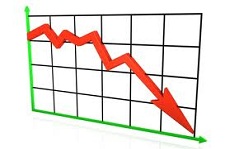Worst-case financial crisis scenarios explored
 An intriguing article in CNN’s finance section explores some scary possibilities while looking at all of the possible factors that could lead to (yet) another financial crisis. Among the possible culprits are the obvious (interest rates, borrowing), the unpredictable (a “flash crash”), and those we can’t do much about (external influences in China, Japan, and Europe).
An intriguing article in CNN’s finance section explores some scary possibilities while looking at all of the possible factors that could lead to (yet) another financial crisis. Among the possible culprits are the obvious (interest rates, borrowing), the unpredictable (a “flash crash”), and those we can’t do much about (external influences in China, Japan, and Europe).
The so-called “super council” of bank regulators came up with the list, which includes the afore-mentioned possibilities and many, many others. It’s not something that really makes one optimistic about either the near or distant future, that’s for sure.
One of the more interesting dangers is that of banks being seen as “too big to fail”. In this case, when banks know that they can count on a bail out from the government, they may take financial risks that they wouldn’t otherwise take, knowing all along that they have a safety net. This talk has reinvigorated the debate on how and why banks get some low rates on their loans from the government, and whether it should even be that way.
Then, there is the concern over rising interest rates. JPMorgan Chase’s Jamie Dimon himself says that his company has given up the chance to make much more money than they have because they don’t want to contribute to rising interest rates. If rates climbed the way that they did twenty years ago, Dimon believes that JPMorgan could make $5 billion, which is surprising to hear.
Finally, talk about a bill that would increase the amount of money that banks have to have on hand is receiving quite a bit of debate. The bill, proposed by two Senators (Sherrod Brown and David Vitter), would raise the amount required from 9% to 15%. Some say that this policy, which would seem to be a good idea, may have unintended costs.





